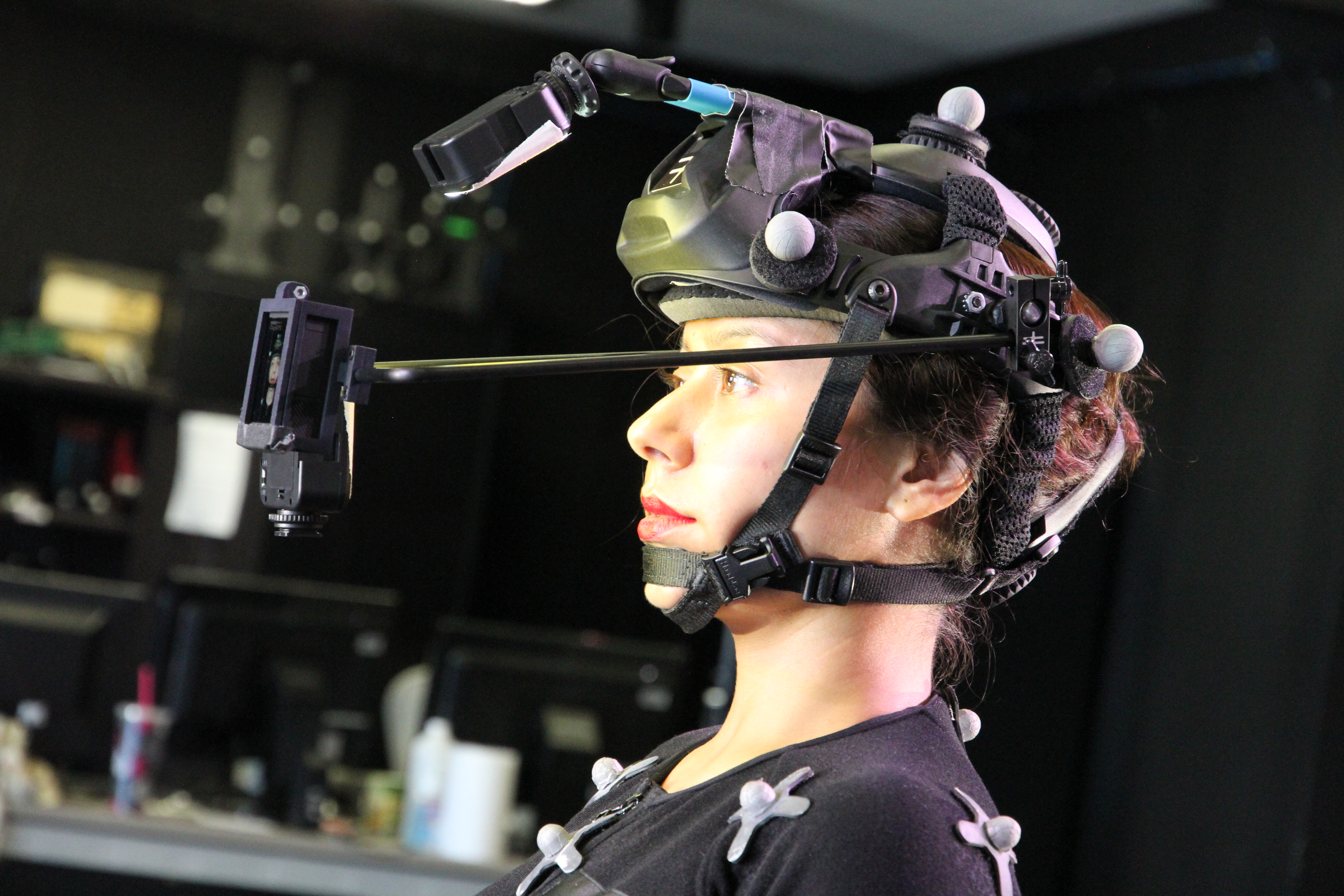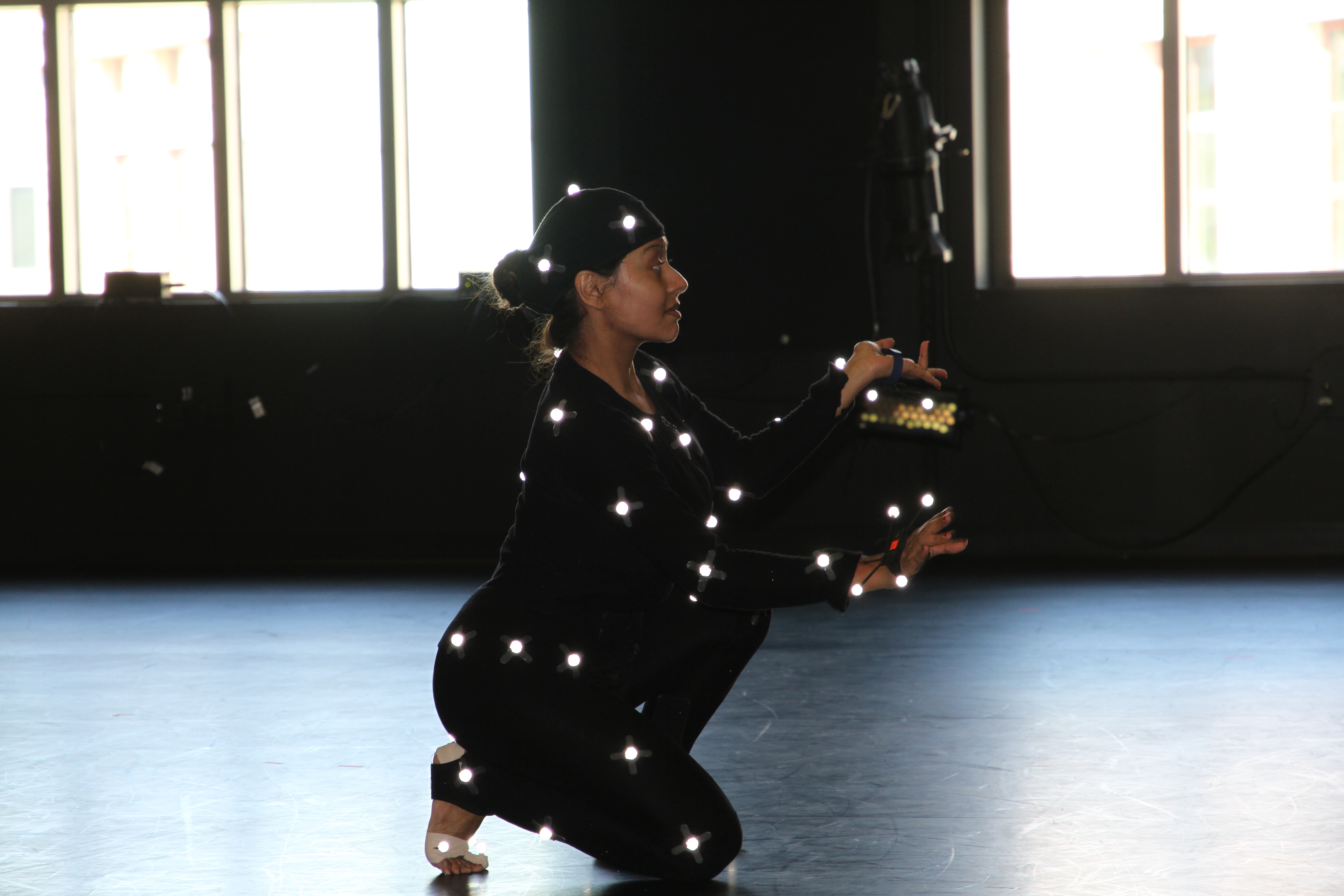Motion Capture in Action | 1 | 2 | 3 | 4 |
Epistemological Locus of Information

To begin with, my historical inquiry is not archival in nature. I am not seeking to recover the experiences of historical temple dancers as they lived, moved, and danced across the centuries. Rather, it is a creative commentary on the traditionally marginalized figure of the Mahari or the temple-dancer. My creative praxis of unearthing the Mahari within my sensate dancing body accommodates the academic demands of research as well as compositional techniques that resonate with her movement aesthetics. As a methodology, practice-as-research (PaR) becomes a process of accommodating demands of the academy with my own practices of the arts world. The process of this digital abstraction of my movement is as illuminating as the final visual referent in the form of the skeletal avatar.

At every stage of the PaR methodology, I encounter a new discovery—a new mode of engaging with history as well as technology. As noted above, the ritual encounter of capturing my movement via the optical cameras in the dark room connects me to the dark temple-sanctum as navigated by the Mahari. The demarcated boundaries of the dark capturing session question the givenness of the lit proscenium theatre since light and shadow were a part of the ritual movement praxis of the Mahari. Working with my own data to build a 3D animation product illuminated my equation to my negative space. The 3D environment opens up my visual field by providing access to multiple orientations of the same movement. This percolates to my embodied practice as I rearticulate my movements mediated through my technological body. The recrystallization of movement enables access to newer modalities of interpreting and living my embodied praxis. The mediation process imbricating historical and technological modes of abstraction helps me gain a more connected, sensate, and deeper epistemological engagement with my movement practice.
The Odissi movement changes in materiality with the change in medium—my body into skeletal and avatar versions. The reproducibility of my body in the digital realm questions the uniqueness of my performative aura. My screenic versions bear my movement qualities. My torso punctuates the musicality of the movement in tandem with my limbic extremities. Looking at myself in various stages of deconstruction questions my sense of self and its uniqueness. It also brings to light the central question of loss in the field of Odissi—the loss of Mahari movement.
In this digital exploration of PaR, I am able to conduct a detailed digital deconstructive methodology to foreground a historically marginalized aesthetic. My skeletal body does not have the accoutrements of my proscenium Odissi regalia. Rather, its pared down movement with the flickering markers show that I am working with the premise of light and dark, loss and presence.
The transformation of the skeletal version to a male avatar is equally intriguing as I feel another moment of access—perhaps to the historical male dancer or the Gotipua. The online process of creating the avatar is another point of departure for me as I feel I am working on adorning myself through a ritualized makeup ceremony—a process central to Odissi performance. The Odissi as well as the Mahari dancer ensures that they have elaborate facial makeup accentuating the eye movements, the lips, and the eyebrows. The process of makeup is a sacred one as the dancer sits in the green room for hours right before the performance painting the face with intricate details. The making of the avatar seemed to me very close to that centering exercise. I attach the skeletal rig to the rig of the male avatar. This meshing of rigs is interesting since it requires the coming together of two separate bodies on screen. The skeletal body had to be completely subsumed by a male avatar such that the latter moves with my qualities. The subsuming of my body with that of another materiality is the central tenet in this experiment given that I am interested in playing with my agency. The creation of the male avatar is part of that play. The avatar seems to have a mind of its own. I cannot recognize myself in this version anymore. The subtle choreographic details that are lost due to this translation question the primacy of myself in the digital environment.
Knowledge—historical, technical, and technological—in the dancing body is articulated in the processes of motion capture. When my motion capture experimentation meets Erin's design, it faces questions of access, multimodal narrative, gesture, and culture through the lens of digital writing, as delineated in A Designer's Story.